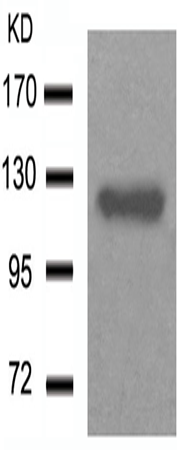中文名稱(chēng): 兔抗GRIN1 (Phospho-Ser896)多克隆抗體
|
Background: |
NMDA receptors are members of the ionotropic class of glutamate receptors, which also includes Kainate and AMPA receptors. NMDA receptors consist of NR1 subunits combined with one or more NR2 (A-D) or NR3 (A-B) subunits. The ligand-gated channel is permeable to cations including Ca2+, and at resting membrane potentials NMDA receptors are inactive due to a voltage-dependent blockade of the channel pore by Mg2+. NMDA receptor activation, which requires binding of glutamate and glycine, leads to an influx of Ca2+ into the postsynaptic region where it activates several signaling cascades, including pathways leading to the induction of long-term potentiation (LTP) and depression (LTD). NMDA receptors have a critical role in excitatory synaptic transmission and plasticity in the CNS. They govern a range of physiological conditions including neurological disorders caused by excitotoxic neuronal injury, psychiatric disorders and neuropathic pain syndromes. |
|
Applications: |
WB |
|
Name of antibody: |
GRIN1 (Phospho-Ser896) |
|
Immunogen: |
Synthetic peptide of human GRIN1 (Phospho-Ser896) |
|
Full name: |
glutamate receptor, ionotropic, N-methyl D-aspartate 1 (Phospho-Ser896) |
|
Synonyms: |
GLURZ1; GRIN1; NMD-R1; NMDZ1; NMZ1 |
|
SwissProt: |
Q05586 |
|
WB Predicted band size: |
105 kDa |
|
WB Positive control: |
Mouse Brain tissue |
|
WB Recommended dilution: |
500-1000 |

 購(gòu)物車(chē)
購(gòu)物車(chē) 幫助
幫助
 021-54845833/15800441009
021-54845833/15800441009
